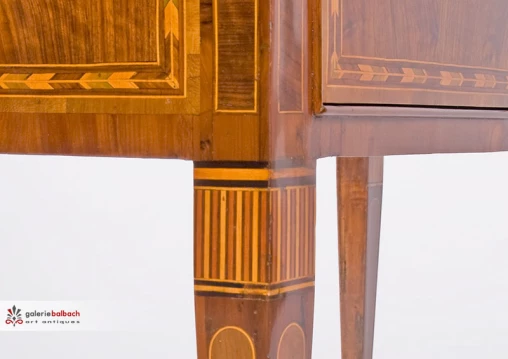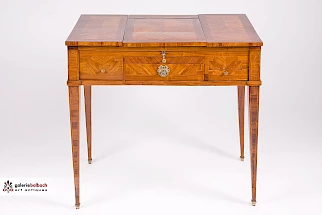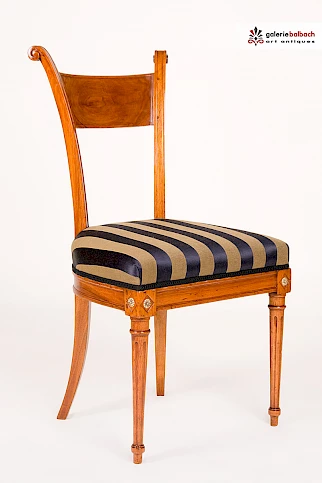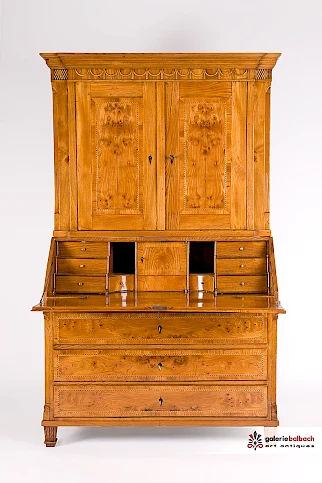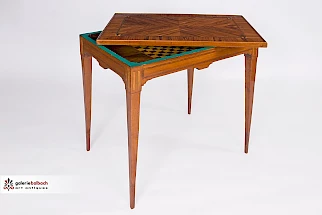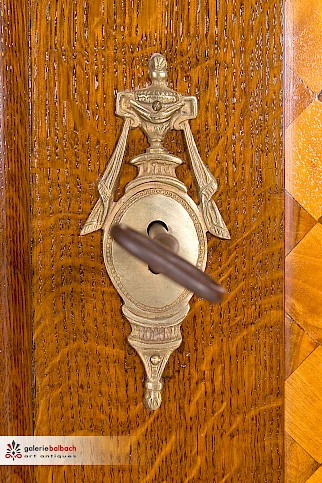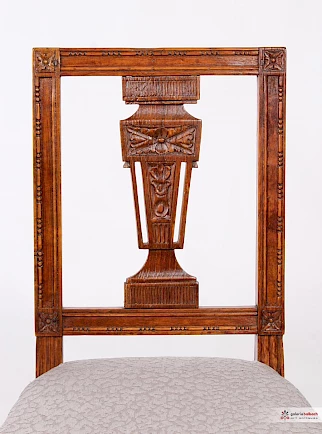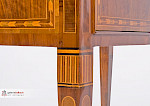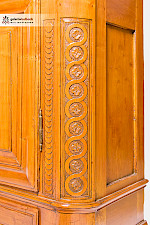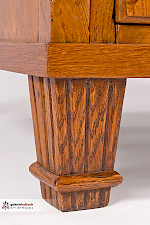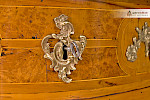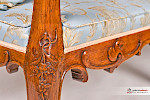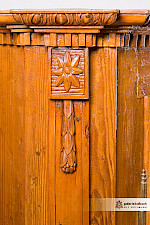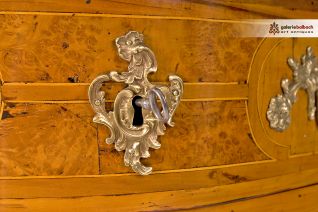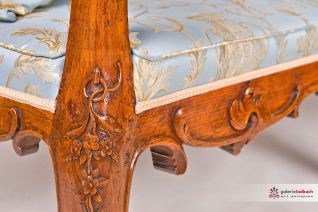Klassizismus / Zopfstil / Louis XVI
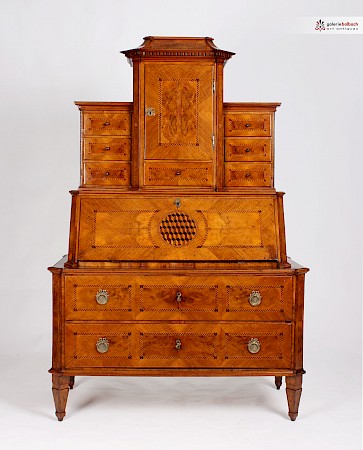
In Germany, early classicism is referred to as "Zopfstil", a style designation that came about due to the modern men's hairstyles that were prevalent at the time. However, the term "Zopfstil" did not catch on. Throughout Europe, this epoch is generally referred to as Louis XVI.
In Germany, especially in rural areas, furniture at this time was built much differently than in France. Local woods were used and the furniture was decorated with carved garlands, friezes and galleries.
The Louis XVI epoch is named after the French king Louis XVI, during whose reign (1774-1792) the style developed. Classicism was ushered in by major changes in the structure of the furniture body and by innovations in the ornamentation and decoration used. In the period from 1770 to 1790, the Early Classicist style took root in France and soon conquered the whole of Europe. It first influenced architecture and then became common in furniture making.
Furniture from the Louis XVI period
In the Louis XVI, the calm, linear form comes into its own again. While curved forms, curves and sweeps were still fashionable in the Louis XV period, classicism saw a return to strict geometric order in the object. Mergers of individual elements gave way to clear structuring. Straight lines and rectangular surfaces took on design functions. Clear symmetry and architectural structures characterise the furniture of this period.
Ornamentation includes vegetal motifs in the form of flower tendrils, blossoms, leaves and above all garlands. Antique ornaments such as wavy tendrils, braided and meandering bands became the most important decorative elements of the Louis XVI. Tooth-cut mouldings and lattice borders, as well as stylised vases with hangings, are particularly typical. Fluting and usually cranked, bevelled corners complement the austere appearance of Early Classicist furniture, as do fluted square pointed feet or round pointed feet.
The rocaille, which was common in the Rococo period, was replaced in Classicism by floral ornaments such as blossoms, leaves and tendrils. There was a return to antique models such as wavy tendrils, stylised vases, garlands and festoons.
Vegetal ornaments were joined by geometric ones such as meander and interlace bands, tooth friezes, fluting and lattice borders.
